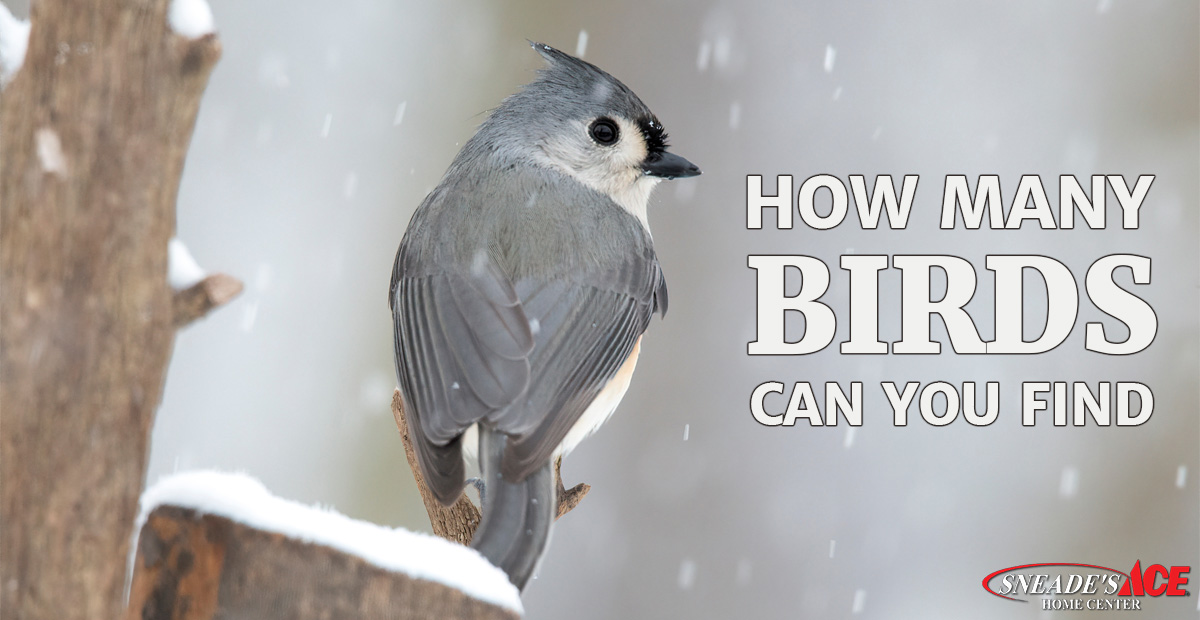
Many bird enthusiasts know that birdwatching can bring such personal joy. With different colored feathers, various calls, and beautiful songs, birdwatching can often be quite entertaining. In February, birdwatchers can not only enjoy the pastime, but they can also help the National Audubon Society track birds for the benefit of conservation.
Every February is the Great Backyard Bird Count (GBBC).
Birdwatchers will count and record all the birds they see in their backyard or favorite area. Participants should count birds on one or more days of the four-day event. There is a minimum counting time of 15 minutes, but there is no maximum. Anyone may birdwatch and count as long as they wish.
Once they’ve completed their daily counting, participants report their sightings on birdcount.org.
Participation is Important
The National Audubon Society asks for anyone and everyone around the United States to participate in the GBBC for a few reasons.
First, birds are good indicators of the health of ecosystems. So, having data helps give conservationists a clearer picture of how climate changes. Also, without the data, scientists can’t see a snapshot of where birds are and where they aren’t. Suppose bird numbers are declining in areas of the country. In that case, it could be because of changes in the ecosystem due to factors like global warming.
Second, tracking bird data helps conservationists understand how the bird population might be changing. If there are fewer birds than before, the
GBBC helps that possibility come into focus.
Third, becoming involved in counting birds and reporting on birdcount.org gives all bird enthusiasts a chance to help.
And finally, all skill levels can participate, making this a good family activity or a learning moment for children. Anyone can participate in this event, regardless of skill level or age.
How it Started
The National Audubon Society is a non-profit environmental organization. Its mission is to protect birds and their habitats using science, advocacy, education, and conservation
The organization is named after James John Audubon, an ornithologist, naturalist, and painter who lived in the early 19th century. But he wasn’t the founder of the organization. The man who began the non-profit in 1886 was George Bird Grinnell, an editor for Forest and Stream. He named the organization in honor of Audubon. To increase the effort of dedication to the conservation of birds, The National Audubon Society recognized that nationwide information is needed. And that’s why GBBC began.
In 1998, an online citizen science project was born, and it has been going strong for 25 years. It’s unique in that anyone can collect data on wild birds. When a participant enters data online, results are displayed immediately. Participants can see real-time maps and charts of bird populations around the country as folks report their counts.
Bird Watching with Technology
Of course, you can still participate in bird watching the way folks have for generations – by sitting near a window, with or without binoculars. But bird watching has gone high-tech. Many helpful tools help any birdwatcher obtain accurate data while participating in the GBBC.
The Merlin Bird ID is an app for smartphones to help identify birds. eBird is an app used to track birding activity. You can use the app to enter bird tracking data for the GBBC. Or anyone can enter tracking data on their laptop or desktop computer.
Sneade’s Can Help
Whether you are an avid bird watcher or are just beginning, Sneade’s Birding Center can cover all your needs to bring our feathered friends to your backyard. Stop in before the Great Backyard Bird Count for seed, baths, feeders, or houses. Then you can participate in this fun nationwide event and make a difference in the conservation of wild birds.
